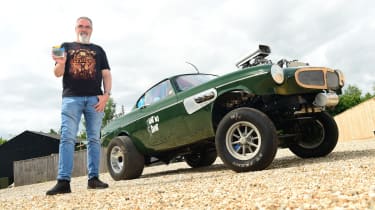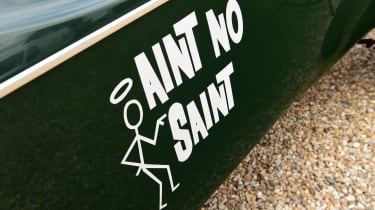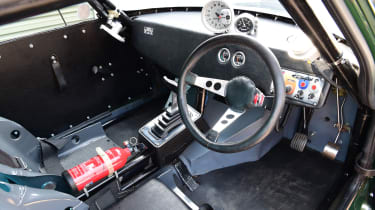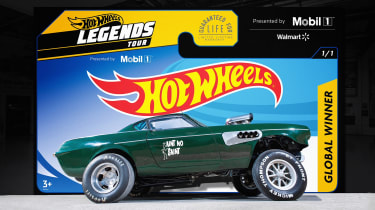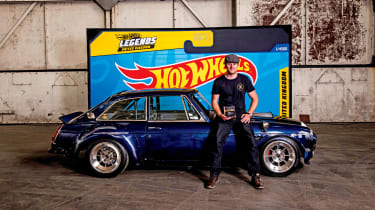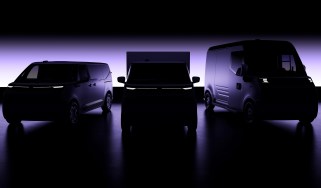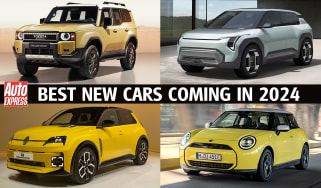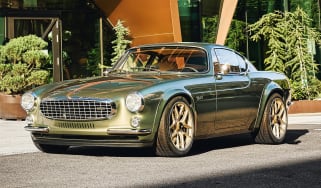How a 50-year-old Volvo became a Hot Wheels legend
We find out how a Volvo-based drag racer conquered the world to become a diecast metal car in the Hot Wheels Legends series
If you’re into cars, then diecast models are likely to have been a major inspiration in early life. Enthusiasts of a certain vintage will have collected Dinky Toys, and later came Matchbox and Corgi Toys, but in 1968 an American upstart arrived in the shape of Hot Wheels.
Founded by US toy giant Mattel, Hot Wheels drew inspiration from the late-sixties car scene that pervaded the brand’s home state of California. That meant a range of brightly coloured muscle cars and hot rods that weren’t necessarily accurate replicas, but served Hot Wheels’ mission to make them as fast as possible on the bright-orange track sets that the company also launched.
Fast forward to 2023, and Hot Wheels is celebrating 55 years of making diecast cars of every description. Compared with the original 1968 line-up, the current range is hugely eclectic, with modern production cars, classics, racers of all classes, novelty models, pop-culture tie-ins and even the occasional reappearance of an original casting. As well as the standard supermarket and toy-shop cars for kids, there are higher-quality scale models, limited editions and rarities offered to tempt adult collectors to relive their childhoods.
But what goes into creating a Hot Wheels car? To find out, we spoke to one of the brand’s lead designers, and we went to Somerset to meet the builder of an extraordinary car that has made the journey from the UK’s drag-racing scene to toy aisles across the globe.
Competition time
For its 50th anniversary in 2018, Hot Wheels launched the Legends series, a competition where vehicles are entered to become immortalised as a toy car. And in 2021 the contest had its first UK winner, Lee Johnstone and his 1969 Volvo P1800. We say Volvo, but as you can see from the pictures, Lee’s P1800, dubbed ‘Ain’t No Saint’, isn’t exactly a replica of Simon Templar’s machine from the sixties TV show.
“The shell is probably the cheapest part of the car,” Lee told us. “I wanted to build a car for drag racing and was looking for something American, but then this came up for £800 and I couldn’t say no.” It was initially constructed in 2014 by Lee and co-builder Steve Wright in the style of a ‘gasser’, a type of dragster that was popular in the sixties.
Back then, tyre grip was in short supply, so builders jacked-up a car’s front end to help transfer weight over the back wheels for traction, which was much needed, considering how much power the big V8s provided. The result is that gassers tend to look cartoonish by default, and Lee’s Volvo was an obvious candidate for a toy car from the outset: “We had comments that it looked like a Hot Wheels as soon as we finished it,” Lee said.
Ain’t No Saint has some heavyweight statistics to match its looks. The engine is a 460 cubic-inch (7.5-litre) ‘big-block’ Chevrolet V8 with a 6-71 GMC supercharger bolted on top that’s fed by the air intake that sits taller than the car’s roof. While the P1800 hasn’t been tested on a dyno, scrap-paper sums put power at around the 650bhp mark. This is sent to the back wheels via a GM three-speed automatic transmission and Ford rear axle that are set up to cope with the stresses involved with a full-power launch at a drag strip.
A tiny fuel tank sits on the car’s nose, while the open exhausts head straight out of the front wings behind the wheelarches. The front wheels are at least a foot lower than where they would be on a standard P1800, while the straight- tube axle at the front was taken from a Sherpa van and is connected to leaf springs; this isn’t a car that’s designed to go round corners as quickly as it goes in a straight line.
There are 15-inch wheels and tyres front and rear, although the Hoosier slicks at the back are nearly a foot wide for maximum traction. Add in a full roll cage, race seats and safety harnesses, and Ain’t No Saint weighs in at 1,454kg, around 300kg more than a standard P1800, but then it also has more than six times the power.
Lee has refined and improved the car over the years, and it has a best quarter-mile time of 9.92 seconds, with a terminal speed of 136mph, all from a standing start. To put that into perspective, a new Porsche 911 Turbo S can cover the same distance in 9.9 seconds from a standstill.
Fast forward to 2020, and while Lee was enjoying racing the Volvo on the strip, his daughter Eleanor initiated the entry into the Hot Wheels Legends contest. “She entered it and I thought nothing of it, really,” Lee told us. “But we won the UK contest, then we cleared the European leg, and before we knew it the car was one of the 10 finalists in the States.
“We didn’t take the car to California, but we live streamed the competition at home in Somerset instead,” Lee explained. “One of the judges was Jay Leno, and when he and some of the other members of the panel [including members of the Hot Wheels design team] kept saying nice things about the car, I thought ‘We might be on to something here...’. Then they announced that we had won, but of course our internet cut out just at the wrong time, so I didn’t actually hear that!”
The design story
With the prize awarded, so began the process of creating Lee’s car as a scale model, and a race against time for the Hot Wheels design team. The designer in charge was Manson Cheung, who told us that it takes less than 12 months to go from the initial design to the final product. “We want the Hot Wheels Legends car to be the first car of our annual releases, so with Lee’s car picked in November, I had to get to work to get it ready for the stores the following September or October,” he explained.
While Hot Wheels cars are nominally 1:64 scale, the biggest limiting factor to a car’s look is the fixed sizes of wheel that the designers have at their disposal, so there is some artistic licence in terms of scale. “If I’m designing a full-size car from scratch, I’ll take lots of photos to make sure we have all the details that we need,” Manson explained.
“But we couldn’t do that with Lee’s Volvo being back in England, so I asked him to take lots of detail pictures. Once
I have those, I get on the computer and map everything out, with the wheels being my anchor points. Then I’ll adjust the shape and scale it so that it looks roughly 1:64. Obviously we already have cars that are made to 1:64 scale, so we will compare new ones against them to see if they look right.”
Once the basic shape looks correct, then it’s down to the details – but not too many, otherwise it gets complicated. “Sometimes there’s almost too much information, so I’ll have to bring it back, because you’ve got to imagine we’re looking at a car that’s going to be about two and a half to three inches long,” Manson said. “In the case of Lee’s Volvo, there was a lot of detail on the interior and the engine bay that I wanted to capture, because the Volvo was nice and everybody knows what a P1800 is, but I wanted to capture the magic of it and what Lee has put into it. That’s where photos really come in, because it’s better if I get to see the real car, but so far I’ve only seen one Legends car in real life!”
The design is done on a computer using software that’s similar to what’s used by car manufacturers. “With most 3D programs, we’re working with surfaces,” Manson explained. “So if you build a box, you’re building six sides, and if you cut a hole in that box, there’s empty space behind, like it’s a skin. In the program that I use, it’s solid like clay, so when you when you cut a hole, you cut into it.”
Prototypes are built using 3D printers, so not only can the designers have a physical rendering of their model, but they can also work out how the car will go together on Mattel’s production lines in China, Thailand and Malaysia. A typical Hot Wheels car comprises a metal body, clear plastic windows, a plastic interior piece, a plastic base and metal axles with plastic wheels attached. “After I’m done with my initial sculpt, we send it to print, because something might look good on screen, but we have to double check the scale and know what I need to do as far as details,” Manson said.
And just like real cars, there’s some track testing involved on the famous orange plastic that Hot Wheels has used since 1968. “We have a track in [Mattel HQ in] El Segundo that’s exactly the same as the one in Asia, and we test cars to see how fast they roll, if they clear a loop. We want to make sure that most of our cars can pass those track sets. Not every car does, of course, but we try to make most of it.”
One area where some artistic licence was needed was the Volvo’s final look. The Ain’t No Saint door graphics were too similar to the original logos for The Saint TV series. “We tried to match Lee’s Volvo as much as possible, so it was painted British Racing Green, but we had to change the graphics a little because we didn’t have the rights for the logo, so we just changed it to a Hot Wheels one,” Manson said. “We’ve got 250 new models released every year, so there are so many small details like that which need to be considered.”
Either way, the road for Lee’s Volvo from the dragstrip to the high street has been a fun one.
This year's winner
The 2023 Hot Wheels Legends contest is well under way, and the UK has already announced its contender for the competition.
Michael Wallhead’s 1979 MG ‘B-EAST’ took top honours, with the judges praising its creativity and ‘garage spirit’. The car is powered by a 3.0-litre Jaguar V6 and features many recycled parts, including the rear axle of a Reliant Scimitar, throttle bodies from a Triumph motorcycle and seats trimmed in old denim jeans.
Michael’s MGB moves on to the European final, before the winner of that contest heads to the grand finale later this year in the US.

